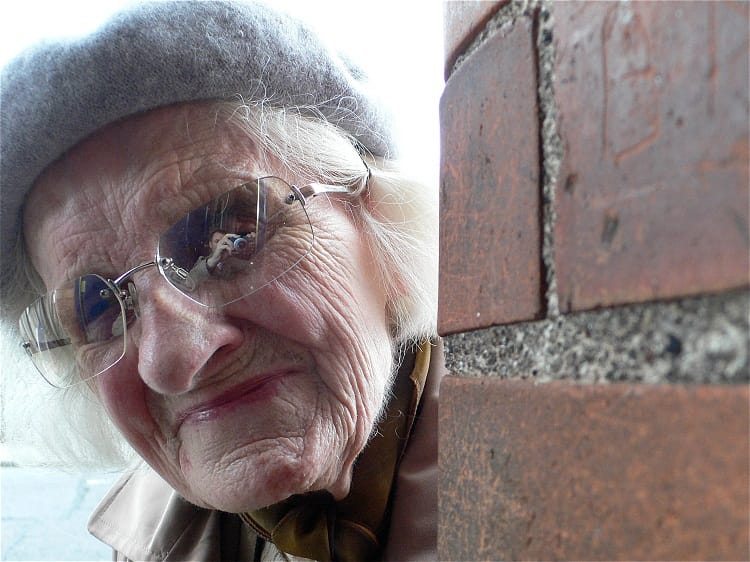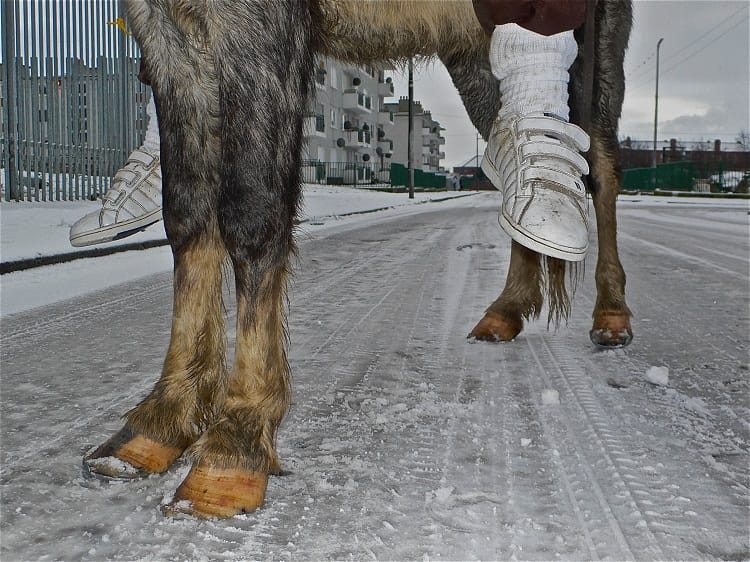What’s the best way to tell area residents about plans for a new asylum shelter nearby?
The government should tell communities directly about plans for new asylum shelters, some activists and politicians say.
Gregory Dunn’s newly released book of photos is really a collection of stories – like the story of Cunty the horse, and the story of Sean Dublin Bay Loftus.

Gregory Dunn is, by his own description, a flâneur.
For years the Stoneybatter local has walked Dublin’s streets, and nipped down its back alleys, capturing images of the overlooked and unconsidered.
Having gathered together a series of photographs taken between 2005 and 2010 – from Dublin’s Tiger heights to its recessionary depths – his collection HERE has just been published.
“I’m just constantly documenting,” he tells me at his small, terraced house off Manor Street.

Dunn’s dog Vera skulks in an out of the living room at the front of the house that Dunn has called home since 1998.
Slight in frame and wearing a corduroy jacket, Dunn is originally from Deal in Kent. He moved to Dublin in 1990.
He picks up a copy of HERE, his recent photographic collection and flips open the hardback cover. “It’s about unconsidered Dublin,” he tells me. “It’s about disappearing Dublin.”
Dunn captured the photos with a series of simple point-and-shoot cameras. Many spaces he photographed changed as the recession receded, many people he never met again.
“She’s probably brown bread,” he quips, showing me his photo There’s Something About Mary.
When, one afternoon, a Legion of Mary member knocked on Dunn’s door, he couldn’t resist. Reflected in the elderly woman’s glasses is Dunn, clicking the shutter.
“She was really old school,” he says.
In another, Scapular, “an affable Captain Birdseye type”, as Dunn describes him, poses for a portrait. Around his neck sits a large image of the Virgin Mary, tattered and torn.
“Apparently a blessed scapular that is worn out and needs replacing must either be buried or burned,” says Dunn. Often containing holy imagery, a devotional scapular is worn by the faithful around the neck.
Other snaps are more profane than sacred.
As Dunn strolled through O’Devaney Gardens during a cold snap in 2009/10 he took Six Feet.
A horse’s hoofs stand on frosted ground. A pair of men’s trainers with socks rolled up dangle above. “I asked him what the horse’s name was,” Dunn says. “‘Cunty,’” replied the lad.
The day before Halloween one year, Dunn decided to head over once more to the now mostly demolished housing estate.

But the Gardaí were out in force, as seen in Dunn’s photo All Hallow’s Eve, removing the tires from the bonfire that residents had hoped to set alight.
A scrap ensued. Bottles flew. Punches were thrown. There stood Dunn. “They thought I was mad,” he says. “They said, ‘Do you know where you are?’”
So goes HERE, by turns serious and irreverent.
Dozens of artworks hang on the bright, white walls of Dunn’s house.
Metal cars, toy rockets, and statues of Lenin line the shelves. Vintage postcards sit neatly in a display Dunn bought for €10 when Greene’s bookshop on Clare Street closed in 2007.
He’s a perennial collector. “I’ll always collect. I’ll always accumulate things,” he says. “I wish I had more space to expand but I can’t.”
He recently sold much of his collection out of Bí Urban on Manor Street. “It’s getting a second life. Somebody else is going to enjoy that stuff,” he says.

His favourite piece in his diminished collection? Dunn immediately springs up and lifts what looks like an early screen grab of John F. Kennedy, tacked onto plywood.
He spotted it in an antiques shop near Portobello Bridge one day, but was told the piece was NOT for sale.
Years later, the image, still hanging behind the shop’s counter, caught his eye once more. A different person was working that day and did not know that JFK was NOT for sale.
They sold it to Dunn. “I couldn’t get out of the fucking shop quick enough,” he says. “I was terrified.”
Having worked as a documentary filmmaker, Dunn then spent 15 years as a hair colourist and only returned to capturing images in 2005.
Money never abounds, he says. “I’m out of work so much I have time for [photography],” says Dunn. With no formal training, he describes himself as “kind of an outsider”.
“If anything he’s very understated,” says friend and artist Seán Hillen. The pair first met several years back when Dunn was working on a documentary.
“He’s kind of outside photography culture,” he says. “But he is a natural. He has this trustworthy kind of manner that I think people take a liking to.”
Some of the photographs featured in HERE are available on Dunn’s website.
The whole “record”, as Dunn calls it, can be found in HERE which is being stocked Bí Urban in Stoneybatter and the Library Project in Temple Bar. It’s €25, and there are only 500 copies, produced by Dunn’s long-time friend Ciarán Ó’Gaora.
Accompanying each image in HERE is a passage of text. Some of these simply explain the photograph in detail. Or the location. Others tell a story.
For example, the photograph Dublin (Baywatch), is matched with the tale of Seán Loftus.
A barrister who opposed a plan to build an oil refinery in Dublin Bay, Loftus ran several times in general elections.
Changing his name more than once while opposing the refinery, at one point Loftus was registered on the ballot paper as “Sean D. Christian Democrat Dublin Bay Loftus”.
He later shortened that to just “Seán Dublin Bay Loftus“, before lengthening it again to “Seán Dublin Bay Rockall Loftus”.
In Bus Stop, Dunn recounts the “Go ahead” scam that he remembers run by some Dublin Bus conductors in the 1980s.
If you said “Go ahead” to a bus conductor you might have gotten lucky and had to only pay half price, the conductor pocketing your fare without issuing a ticket.
“I researched it on the internet and I could find no mention of it,” says Dunn. “But I feel that stories like that need to be told about Dublin and who’s going to do that?”
A collector by nature, Dunn’s photography is about more than just skill with a lens. It’s as much about stories, archiving what might otherwise be lost.
“The fact is I’m just a bloke with a point-and-shoot camera,” he says. “I’m kind of making it up.”
Get our latest headlines in one of them, and recommendations for things to do in Dublin in the other.